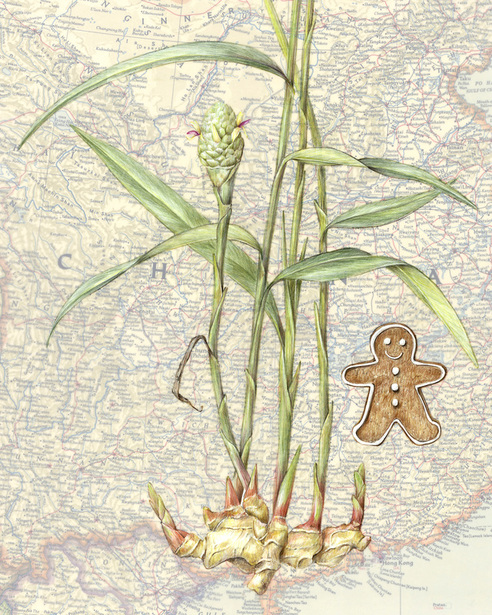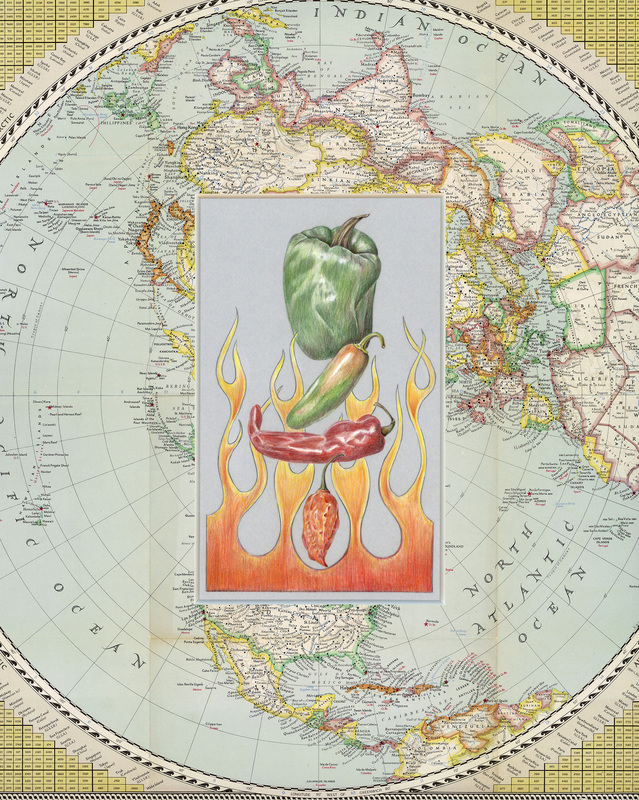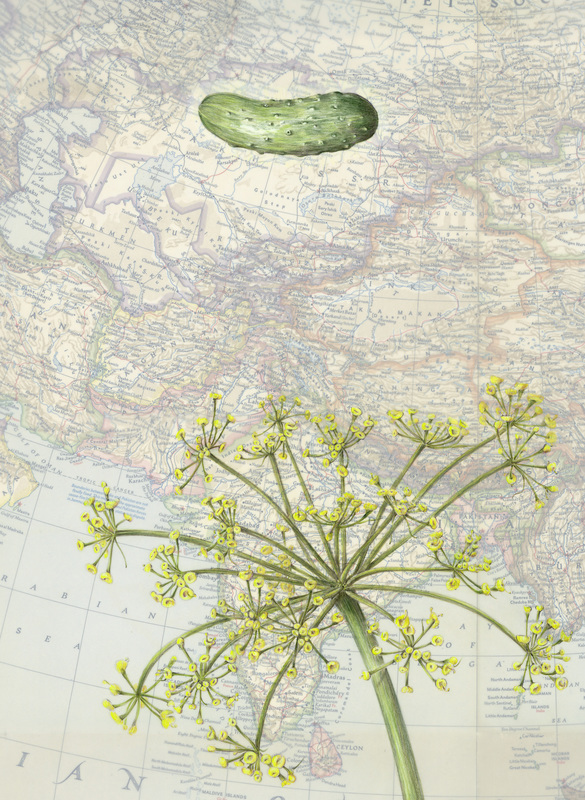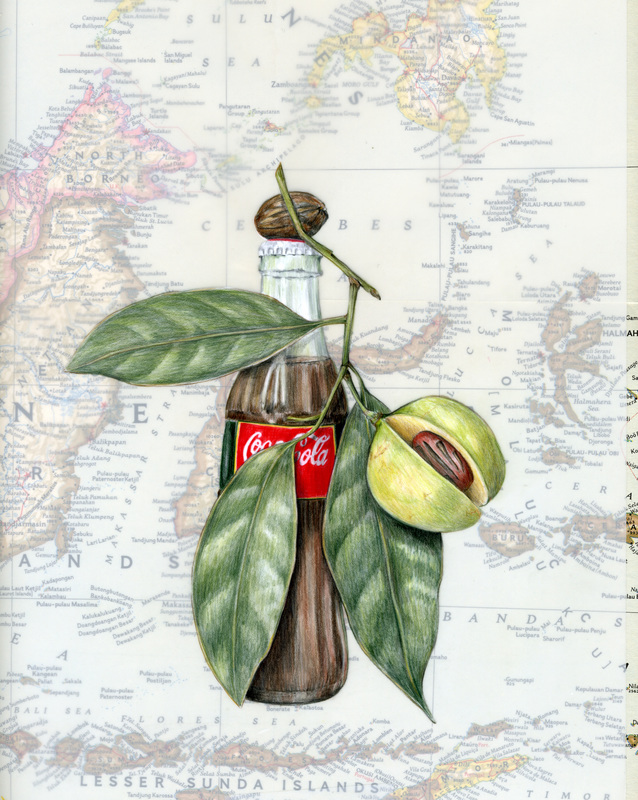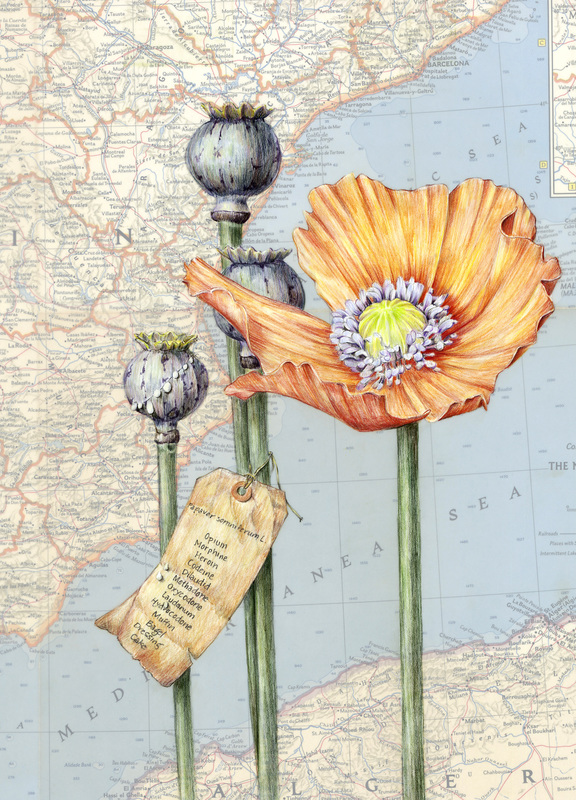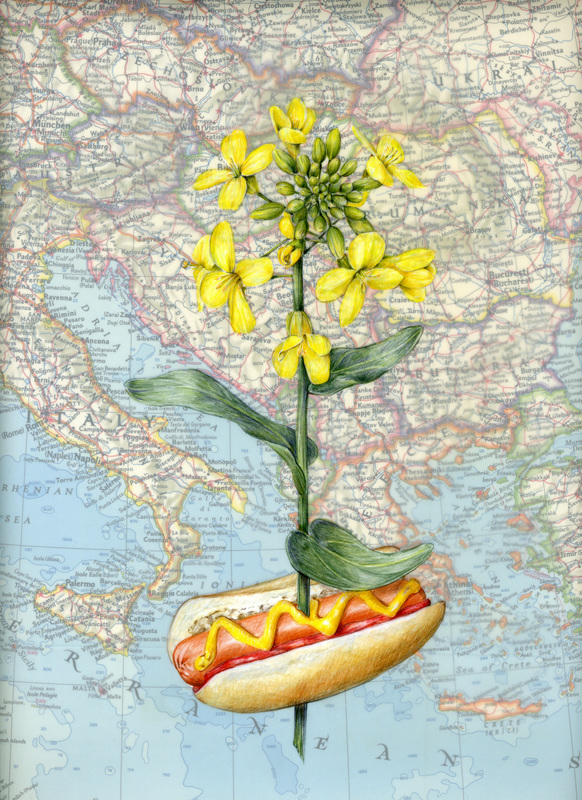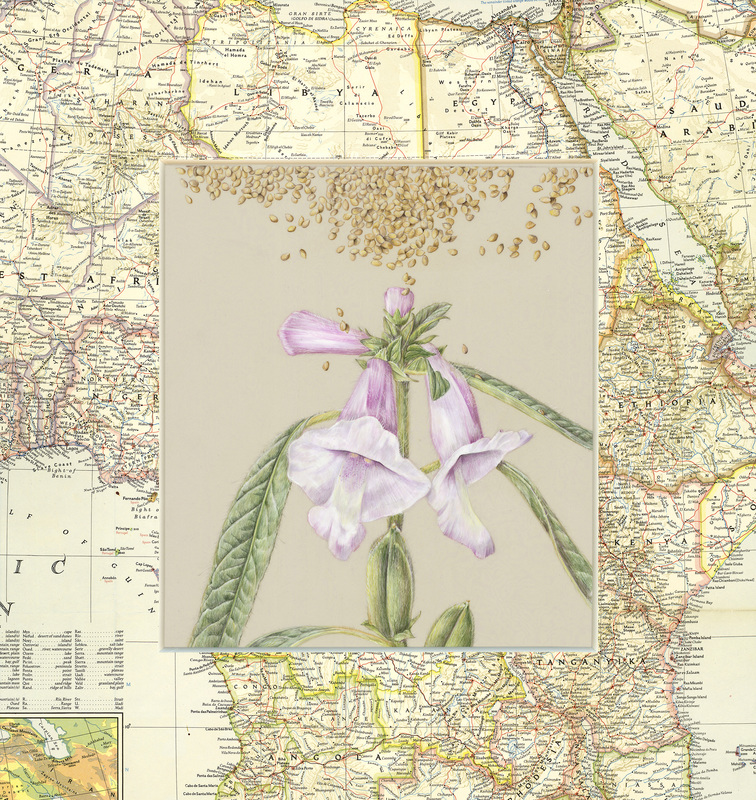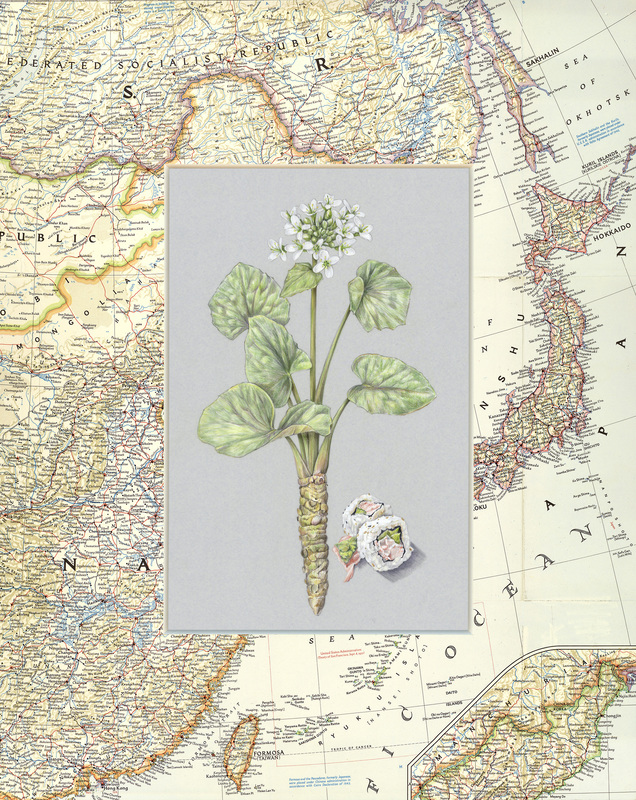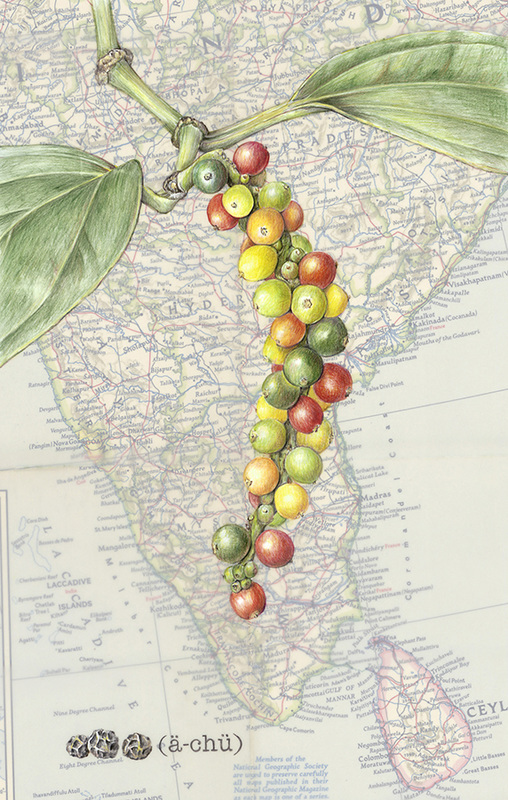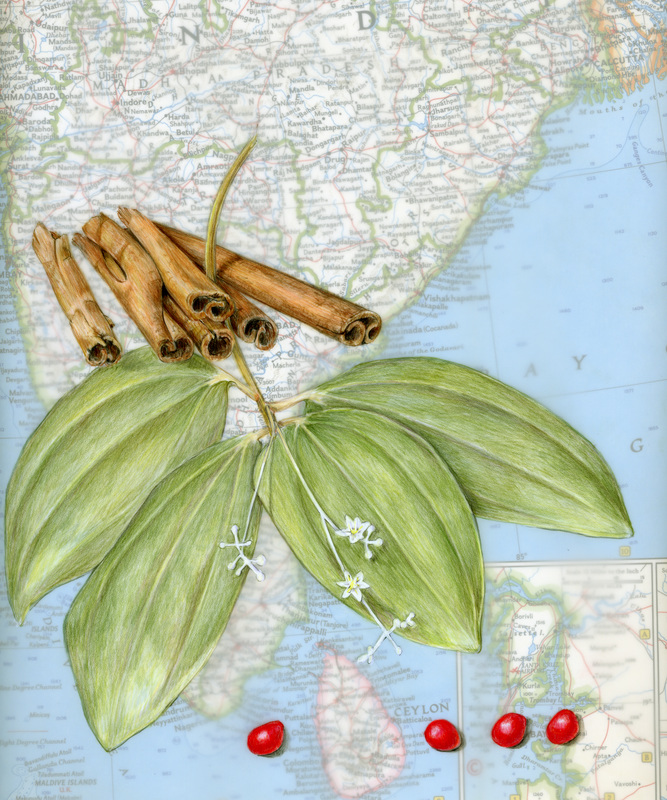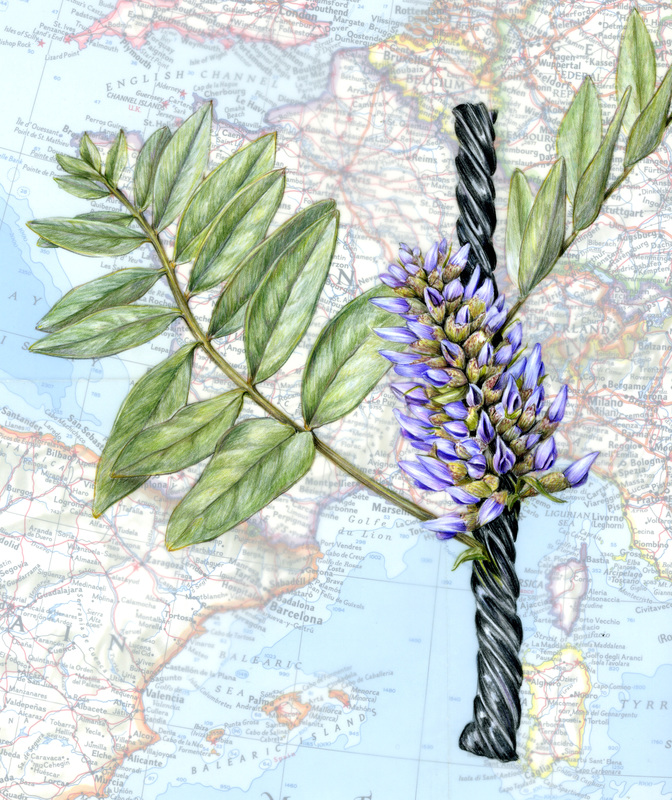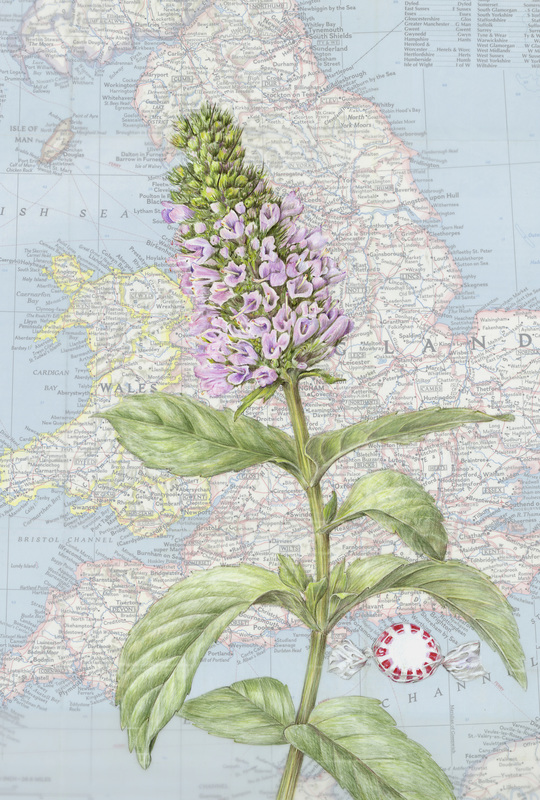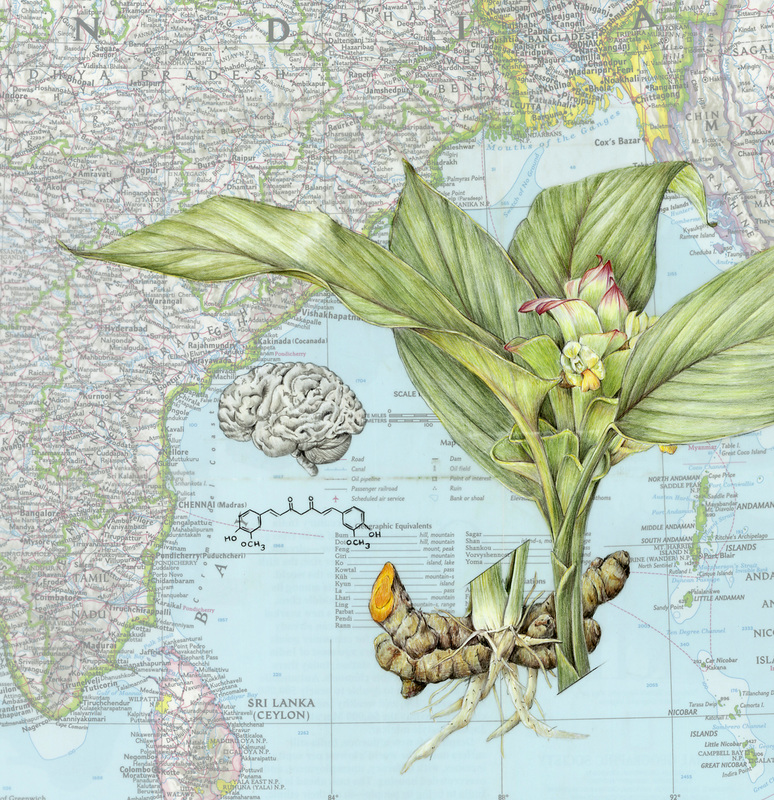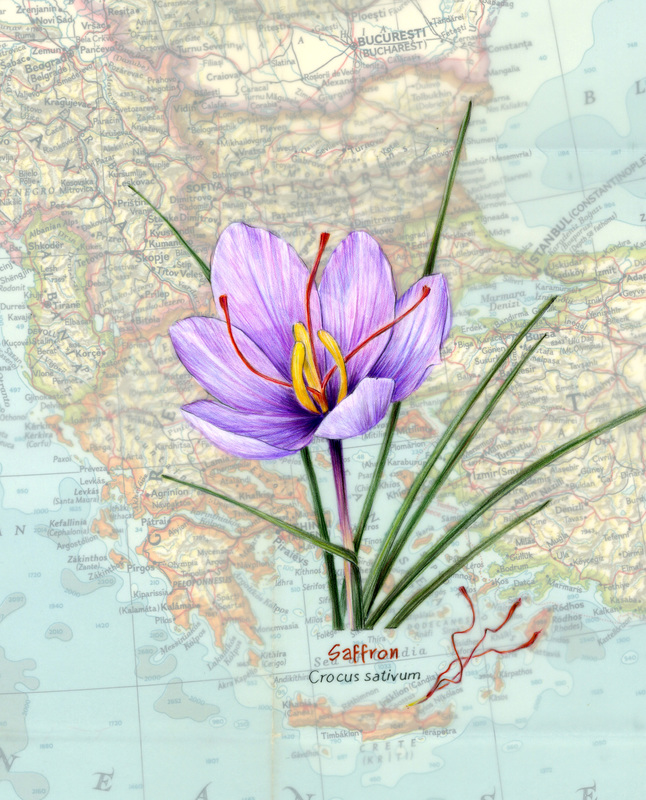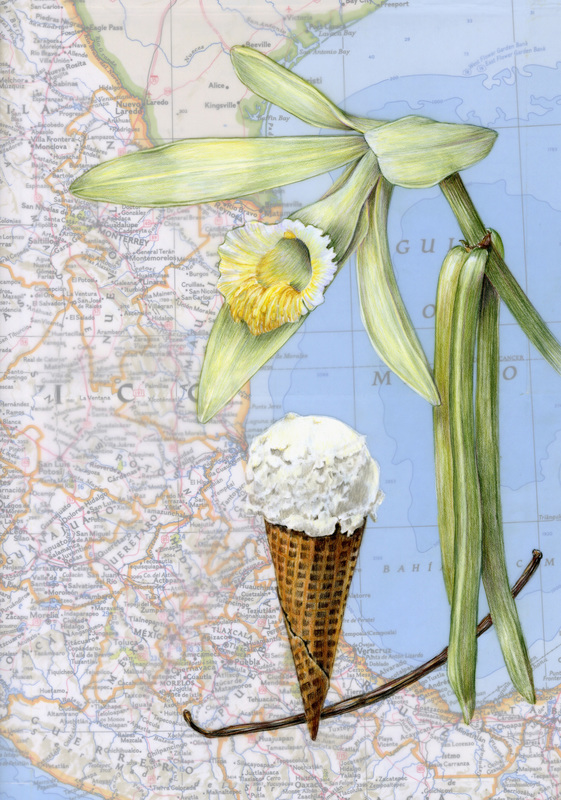Spice
Think about the relationship between people and plants. We eat them, drink them, wear them; build, medicate and flavor with them, but most people could not say where black pepper comes from, much less name the plant that produces nutmeg. Among the most remarkable and least considered plants in the grocery store are the flavors contained in little jars at the far end of aisle 13: the spices.
Every ordinary spice comes from a plant and a place and has an extraordinary story.
Colored pencil with old maps • = SOLD
Every ordinary spice comes from a plant and a place and has an extraordinary story.
Colored pencil with old maps • = SOLD
Zingiber officinale, Ginger: South China • ©2008, 16″ X 20″
Capsicum annuum spp., Hot Peppers: Asia/South America ©2008, 16″ X 20″
Anethum graveolens, Dill: Kazakhstan • ©2008, 16″ X 20″
Myristica fragrans, Nutmeg: Banda Islands, Eastern Indonesia ©2008, 16″ X 20″
Papaver somniferum, Poppy: Western Mediterranean • ©2008, 16″ X 20″
Brassica nigra, Mustard: Southern Mediterranean ©2008, 16″ X 20″
Sesamum orientale, Sesame: Sub-Saharan Africa • ©2008, 16″ X 20″
Wasabi japonica, Wasabi: Japan • ©2008, 16″ X 20″
|
Piper nigrum, Black Pepper: Malabar Coast, India ©2008, 16″ X 20″
Cinnamomum zeylanicum, Cinnamon: Sri Lanka / Burma ©2008, 16″ X 20″
Glycyrrhiza glabra, Licorice: Southern Europe ©2008, 16″ X 20″
Mentha piperita, Peppermint: British Isles • ©2008, 16″ X 20″
Curcuma longa, Turmeric: Tropical India • ©2008, 16″ X 20″
Crocus sativus, Saffron: Crete • ©2008, 16″ X 20″
Vanilla planifolia, Vanilla: Mexico • ©2008, 16″ X 20″
|

